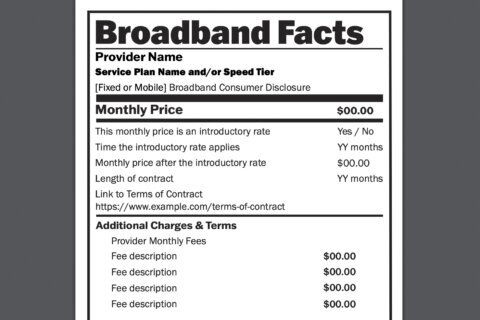Losing weight, exercising, having fewer cranky days … most New Year’s resolution lists include those or hard-to-achieve objectives. So why not add some goals you really can accomplish?
In fact, many financial resolutions are pretty easy to live with. Some, like looking for cheaper cell, cable or insurance deals, can be done in an hour or two. And even those involving ongoing resolve can be relatively painless if put on autopilot — nowhere as tough as going hungry day after day.
Granted, the biggest New Year’s financial resolution — saving more — can involve some continuing sacrifice. But it need not be too painful.
Rethink your savings plan. “Save your raise for retirement,” says Robert R. Johnson, president and CEO of the American College of Financial Services in Bryn Mawr, Pennsylvania. “When you get a raise, don’t adjust your spending. Simply put, live as if you didn’t get a raise and save the difference.”
Any savings increase is easier to do if you don’t have to think about it. Raising your contribution to a workplace retirement plan, like a 401(k), makes the investment automatic, reducing the temptation to spend the money instead. Most banks, brokerages and mutual fund companies can set up similar automatic investing plans for IRAs and ordinary taxable accounts, drawing funds directly from a checking account. By having your paycheck automatically deposited in that account, you can avoid the siphoning that comes when cash runs through your fingers.
There’s nothing wrong with a one-shot savings infusion, either.
“One of the most effective resolutions in terms of lifelong wealth building is to make an IRA contribution by April 15 for the tax year 2015,” says Laurie Itkin, founder of The Options Lady website. Once Jan. 1 arrives, it’s too late to add money to your 401(k) for the year just ended, but putting all you can into an IRA can pay off big time, she says.
Set a budget. Budgeting, of course, always makes sense, so a budgeting vow is a good New Year’s resolution. Obviously, that means controlling big expenses, such as vacations and car purchases, but reining in small ones can produce surprisingly large payoffs.
Try keeping a list of every expense for a month, no matter how small. Many people are stunned at how much painless saving can be achieved by cutting back on expenses that bring little value, such as fancy coffees and snacks. Carrying your lunch to work a few days a week can free up hundreds of dollars a year for long-term savings.
Tracking expenses can be done with a sheet of paper in the wallet, but computer-based and online trackers Quicken and Mint can automate much of the process, assigning a spending category to every item that moves through your bank account. Just don’t forget to manually input those little cash outlays, such as chips from the office vending machine.
Take advantage of automation. Your bank and credit card issuers likely have alert features that will send a text message or email if you have an unusually large charge, your account balance hits a given level or you are close to being overdrawn or hitting your credit limit. Automatic alerts can help keep spending under control, and setting them up is a painless resolution.
Reconsider your investments. Many investors resolve to do a better job in the coming year, and January is a good time for re-evaluating your investment strategy, using the year-end statements that come early in the month. Do you have the right mix of stocks, bonds and cash? Even if you do, would you be better off in different holdings?
By switching from managed funds to similar index-style funds, for instance, you may reduce unwelcome year-end capital gains distributions that can boost your tax bill.
Regular home maintenance saves money. Prepare a calendar for home maintenance items — changing air filters, purging the water heater and having the heating and air conditioning system inspected. John Bodrozic, co-founder of HomeZada, a property management website, says those simple precautions can reduce utility costs and help avoid expensive repairs. Having thorough maintenance records can someday impress a potential buyer for the home, he says.
Shave down your debt. Borrowers can save money by resolving to reduce their debts. If your credit card charges 15 percent, every extra dollar spent to reduce the balance is like earning 15 percent in a savings account, a princely return. So start with the cards that charge the highest interest and set a target date for getting the balance to zero. Going forward, try to use a debit card instead, since that will draw from your checking account and not incur interest charges.
Also see if you can get a better deal on your credit cards, either by switching to cheaper cards or negotiating with your current card companies.
“I always suggest that people go to their credit card lenders, after paying on time for 18 to 24 months, and asking to either lower their interest rate or to raise their limit,” says Stephen Alred Jr., founder of Ignite Financial, a financial advice site launching in 2016. Raising your credit limit improves your credit rating by reducing your “credit utilization ratio,” which is the percentage of the borrowing limit you use.
Credit agencies are required to provide a free credit report annually.
“It’s important to check your credit periodically — annually is fine — to make sure there are no inappropriate items,” says Michael Eckstein of Michael Eckstein Tax Services in Huntington, New York. “If you find any inaccurate information, you can contest it with the credit reporting agencies.”
Look for insurance deals. Shopping for insurance is such a headache that many people just stick with the policies they have, even when better deals are available. But using a broker who deals with numerous firms, or shopping online, can make the process easier, and the payoff can be big. So the homeowner’s and auto policies should be revisited once a year.
Brent D. Dickerson, owner of Trinity Wealth Management in Lubbock, Texas, also recommends an annual review of life insurance policies. The one you got to protect your kids may no longer be needed if they are grown, he says, but if you are getting older it may be worth looking into long-term care insurance.
He also suggests getting an umbrella liability policy to protect against lawsuits. “If you don’t have this, you need it now,” he says, noting that $1 million in coverage may cost as little as $10 to $30 a month.
Get it on the record. Whatever is on your resolutions list, be sure to write it down, says Ken Hevert, senior vice president of retirement at Fidelity Investments. Writing it down and revisiting it often, rather than just keeping the list in the back of your mind, helps keep your resolve from fading.
Also, he says, it pays to break the goals down to bite-sized pieces. It’s a lot easier to think about saving $100 a week than $5,200 a year.
“Too often, people lose the track of the bottom-line benefit of sticking to their resolution throughout the year,” Hevert says. “Breaking down a major goal into more manageable milestones can make even the most ambitious resolution attainable.”
More from U.S. News
Warren Buffett’s 10 Biggest Deals
9 Ways to Invest on a Small Budget
A Smart Investing Plan for 30-Somethings
8 Financial Resolutions for Investors for the New Year originally appeared on usnews.com







